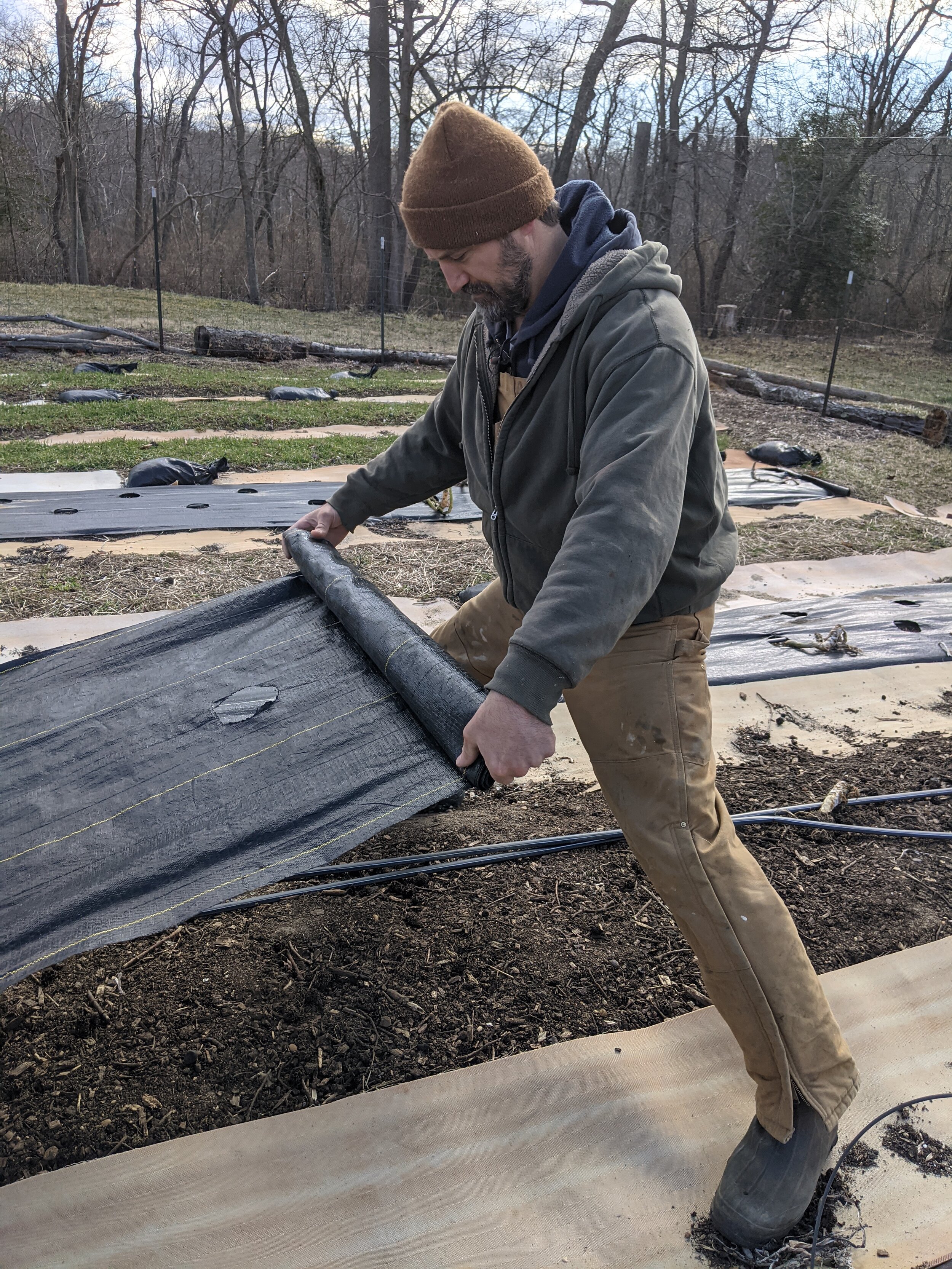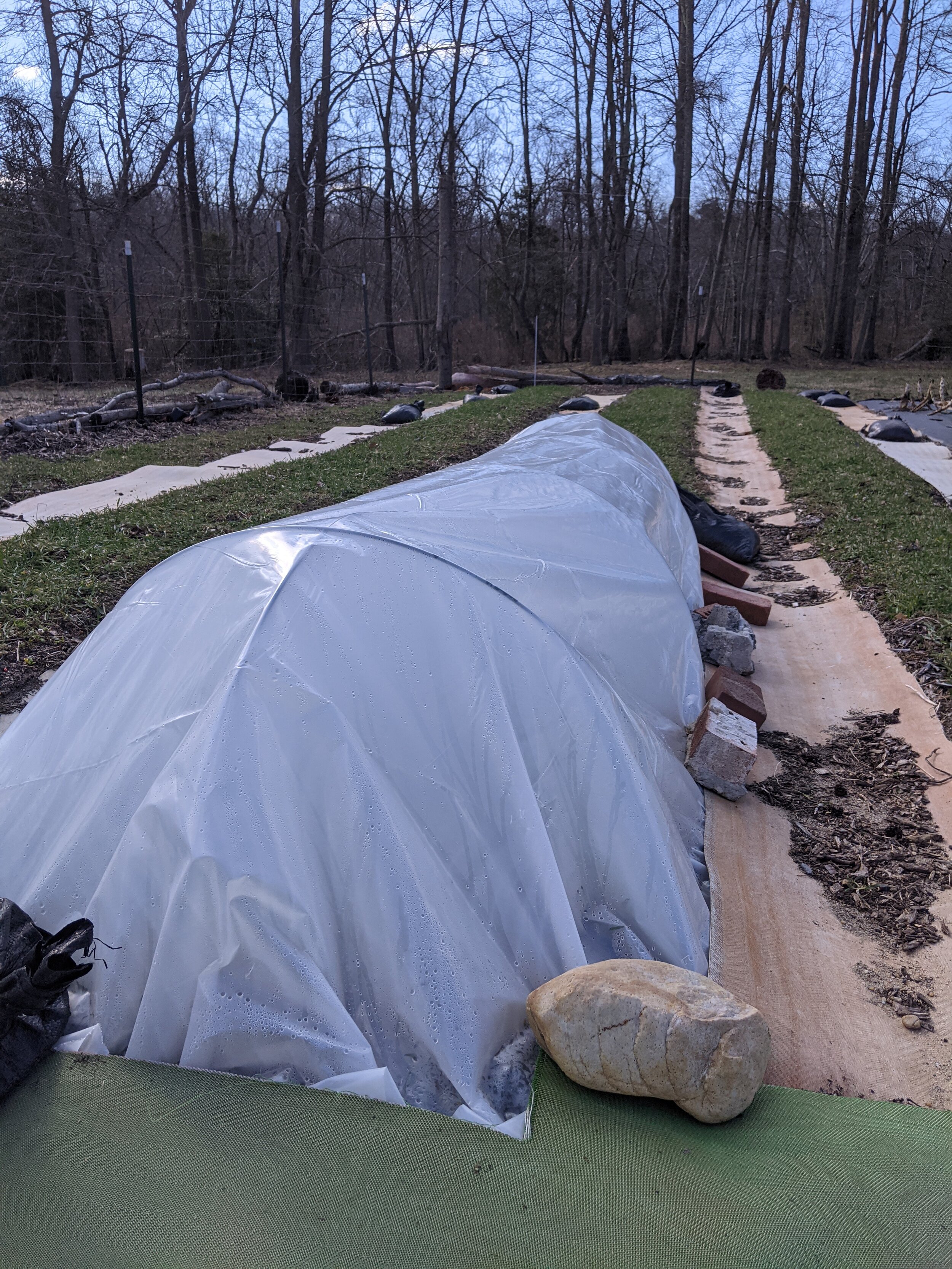DISCLOSURE: THIS POST MAY CONTAIN AFFILIATE LINKS, WHICH MEANS I MAY EARN A COMMISSION IF YOU CLICK A LINK AND MAKE A PURCHASE. FEEL FREE TO CHECK OUT MY DISCLOSURE POLICY FOR MORE DETAILS.
What’s going on with us?
Things are pretty nonstop here. When we aren’t actively farming, we’re planning and dreaming of what we want the farm to look like. Here’s a quick peek at what’s happening here.
Outside
Aaron is prepping the beds by checking pH levels, laying out landscape fabric, and using low tunnels to warm the beds.
Collins (does not at all) lend(s) a helping hand in the garden, while Samson looks on from the other side of the garden fence.
Inside
The seeds are starting to sprout under UV lights, and Aaron is converting a washing machine into a greens dryer.
All in All
It’s a lot of work, but we’re happy to have the opportunity to do it. Farming is challenging and rewarding, just like anything else worth doing.

























